Czech Pilsner is often misunderstood. It’s a style that hasn’t gotten a ton of hype and gets lumped into the overly generalized category of Pilsner.
Czech Pilsner is a very approachable malty and hoppy lager. It’s golden in color, moderate in alcohol, and complex in flavor. It’s bitter but in a rounded way and never harsh. Medium-rich malt flavor hit the palate in unison with spicy, floral, and herbal Saaz hops character.
Here are our favorites:
- Pilsner Urquell Nefiltrovaný (From The Wood)
- Pilsner Urquell (Bottled and Imported)
- Notch Brewing Session Pils
- Czechvar
- Budweiser Budvar
- Gambrinus Premium
- Pivovar Kout na Šumavě Koutská 12°
- Bernard Sváteční Ležák 12°
- Heater Allen PIls
- Auval C-12 Pivo
Pilsner Urquell Nefiltrovaný (From The Wood)
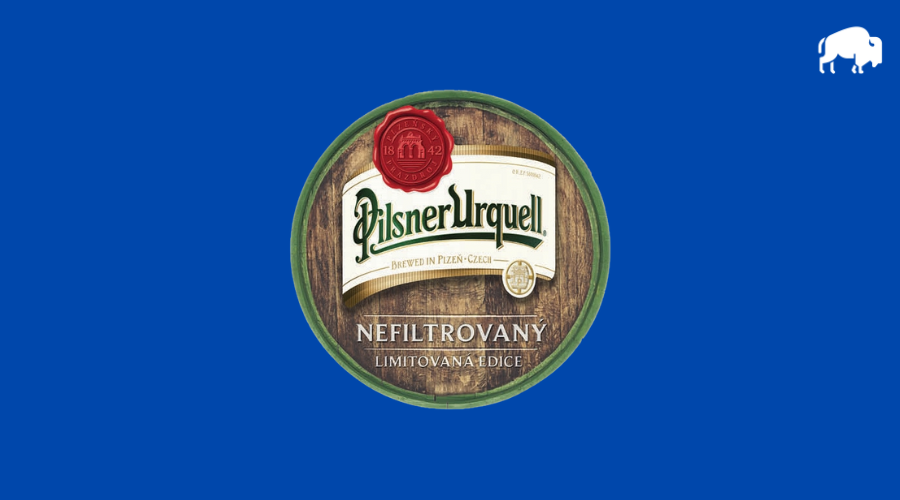
This is a unique example. It can only be found in the cellars at the brewery Pilsner Urquell and occasionally at a festival. It’s the same beer as the standard Pilsner Urquell but it’s stored and dispensed from wooden barrels. Full disclosure, I was unable to determine if the barrels are pitch lined or not. Based on tradition, I’d expect that they are pitch lined and aren’t imparting typical oak or other wood characteristics to the beer.
Pilsner Urquell (Bottled and Imported)

This is doubtless different from what you’d get at the brewery or from a pub that has the “tank beer” variety of Pilsner Urquell on tap. It still stands up as a classic. A touch of malty sweetness. Hoppy yet soft and a pillowy mouthfeel. It pours with a white head and is golden. Moderate carbonation. It may not be as fresh as what you can get in Czechia but it’s still an amazing beer at a great price.
Notch Brewing Session Pils
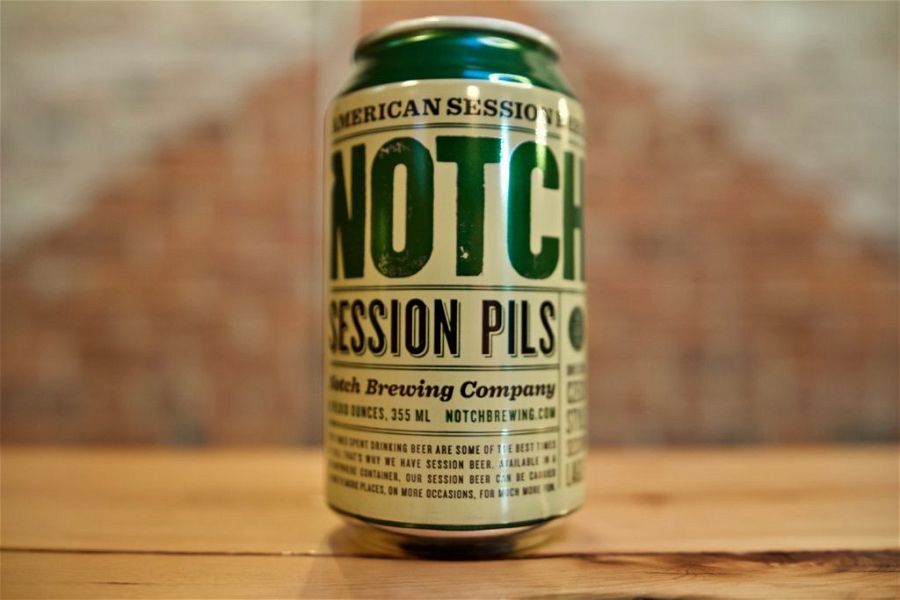
Notch Brewing is dedicated to producing authentic Czech lagers. At least as authentic as you can, while remaining outside of Czechia. Based in Salem, Massachusetts they’ve gone as far as reviving the tradition of aging their Czech Pils in pitch lined barrels.
Their Session Pils isn’t typically aged in the barrels but it still packs a punch for a starting gravity of only 10 plato. This beer represents what most Czechs drink. It’s 4% abv. It’s refreshing but not watery. It’s doughy with a light sweetness on the nose and palate. Herbal, hay, from hops. Enough bitterness to be bitter but not biting.
Czechvar
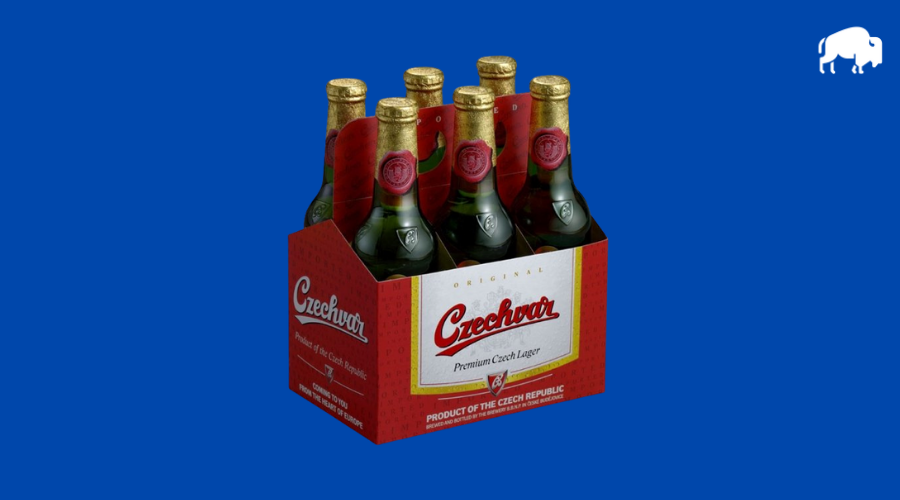
A few things distinguish this Czech Pilsner. It’s a bit dryer and has more of a biting bitterness than a typical example. That said, you’ll still find it approachable and more rounded than a northern German Pilsner.
In terms of flavor, it’s got a bit of bitterness, bready-crackery malt with a light sweetness that fades back into enough bitterness to make you want more of the beer. The color is golden. The overall impression will remind you of a more subdued version of a Czech Pils.
Budweiser Budvar

Born in Czechia. You’ll find it imported in cans. Pours with a nice dense head. Golden in color and clear. The aroma is Saaz herbal and floral with pilsner malt bready-sweetness. The bitterness is pronounced but doesn’t overwhelm the malt. Crisp but not biting with a medium full mouthfeel.
Gambrinus Premium
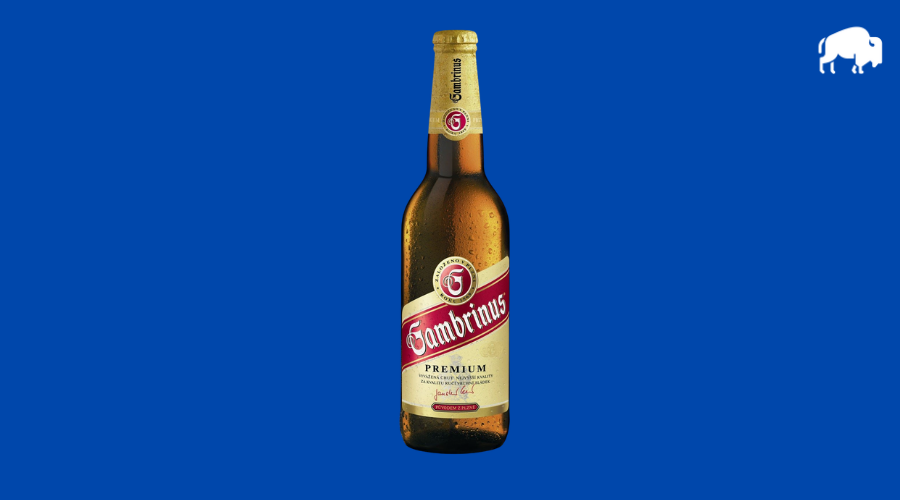
Crisp, and a bit grainy. 5% ABV. Aroma has a light malt paired with herbal hop character. Has a bit of caramel and a touch of malt sweetness followed by hops. Medium-high carbonation. Nice white head.
Pivovar Kout na Šumavě Koutská 12°
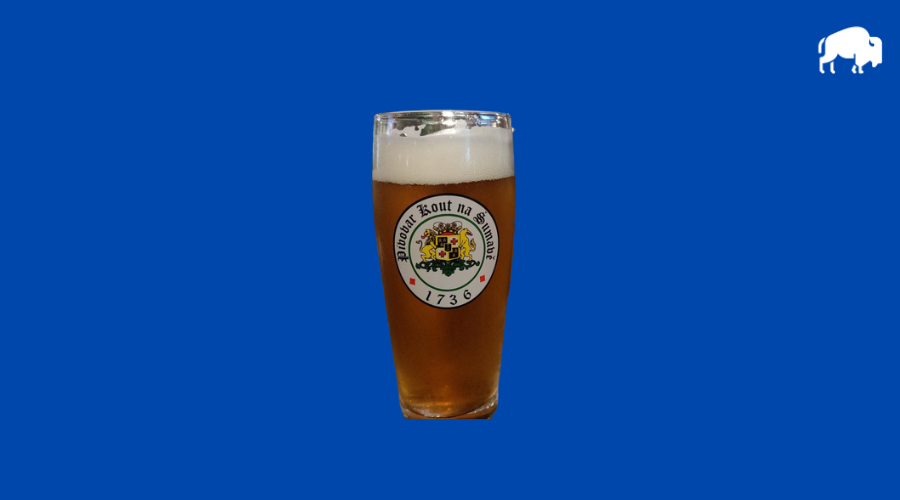
Triple decocted, open fermented, and unpasteurized. This typifies Czech lager. The brewery itself was revived around 2006 and has a well-earned cult following.
Their 12 plato lager is slightly sweet and light on the hops. Deep golden in color and not crystal clear. Medium body. Both the hops and malt shine and satisfy. Hop expression is typical for Saaz…floral and grassy.
Bernard Sváteční Ležák 12°
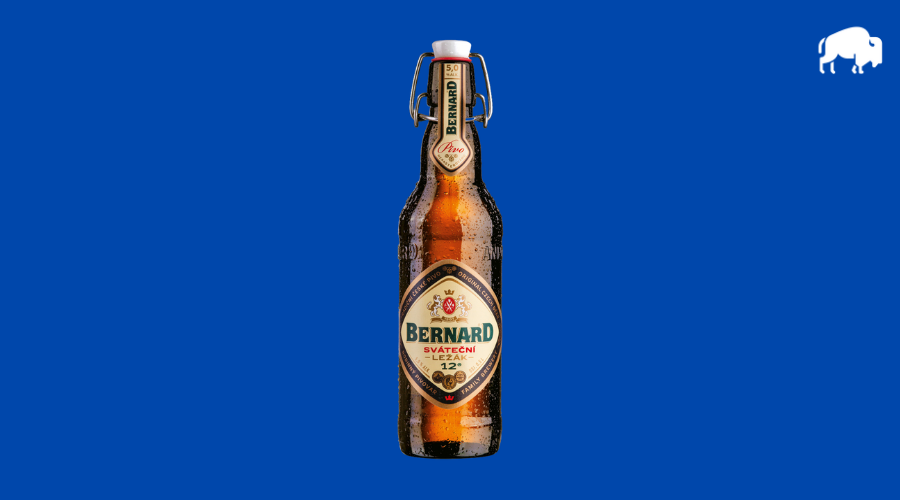
This beer starts sweet and ends with a nice rounded bitterness. Pours a golden amber hue. The aroma has grass and floral notes. Great head retention. Light and creamy. Medium-light body and the carbonation is about the same. Refreshing. It’s got a nice malt and hop balance.
Heater Allen PIls

This another great example of a killer Czech lager coming out of the states. The recipe is based on Pilsner Urquell and they aren’t rushing production. It takes 8 weeks from kettle to glass.
In terms of flavor, it’s got more malt and fewer hops than some Czech lagers. The color is a bit deeper on the golden scale. Herbal grassy hop notes. A light sweetness that fades with some hop bitterness that lingers through tempting you for another sip. Light body and medium carbonation. Great head retention and nice lacing in the glass.
Auval C-12 Pivo
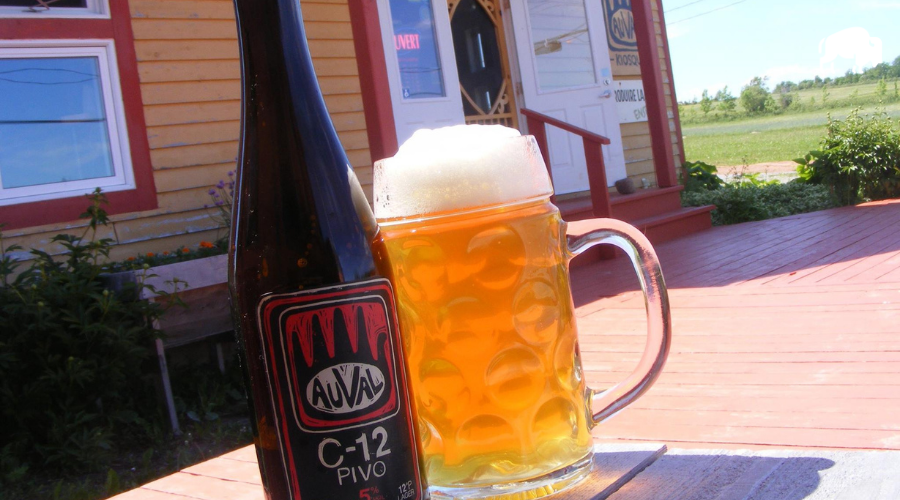
This last one comes from the north, Percé, Quebec to be precise. Bright and golden in the glass. The aroma is flowery and the flavor has some almost honey sweetness. Crisp but not dry. Nice prominent bitterness that doesn’t overwhelm. Light-medium body and a beautiful big head. A hint of caramel. Should remind any Czech of home.
What Is A Czech Pilsner?
There may be a simple answer to this question. This won’t be that. It might get nerdy…
Czech Pilsner is essentially Pilsner Urquell. Or maybe it’s the other way around. But as the modern American beer nerd may know, there are many other beers out there that resemble Pilsner Urquell.
The BJCP has four categories for Czech beer. Czech Pilsner fits best into the Czech Premium Pale Lager category.
In Czechia, the only beer calling itself a “Pilsner” is Pilsner Urquell. This is almost certainly due to a simple linguistic fact.
In both Czech and German, the suffix “er” is used to indicate something or someone is “from” that place. Hence, a wheat beer that was made in Berlin, got the name Berliner Weisse. And a beer from Pilsen in Czechia can be called a Pilsner.
Now in modern American usage, we all know that there are German Pilsners, Czech Pilsners, American Pilsners, New Zealand, Presbyterian Pilsners…you get the idea.
So what should we do? Call only beer from Pilsen Pilsner? No. It’s too late for that. What we can do is try and understand beers from Czechia as the Czechs themselves understand them.
Ron Patinson has covered this topic well. Take a look and see the breadth of styles that are Czech Lager.
Now let’s regain focus. Czech Pilsners vitals are:
- 4.1 – 5% ABV
- 30 – 45 IBUs
- Gold to intensely gold in color (SRM 3.5 – 6)
It’s got Saaz in the aroma and flavor. That means spicy, floral, and a hint of cedar. It’s malty and hoppy. It’s hoppy but not bitingly bitter. The Hops are rounded out from a soft water profile. The water also lends itself to a beautiful and complex malt expression.
On the production side, most Czech Pilsners are or at least used to be open fermented, unfiltered and unpasteurized.
What Makes A Czech Pilsner Good?
A great Czech Pilsner looks refreshing. It’s clear but not always perfectly so.
It invites you in with floral and spicy hoppiness. The same hop flavor is reflected when drinking but the bitterness doesn’t linger on your palate.
Pairing with the hops there is substantial malt flavor. Especially, when considering the modest amount of alcohol.
A critical distinguishing characteristic of a great Czech Pilsner is the softness that mellows out the hops and supports the malt. Neither the hops nor the malt is the lead. Both shine equally at different moments through the drinking experience.
Czech Pilsner is a beer that you can have a few of…and still converse and connect. It’s not distracting or boring. It’s a social beer.
Freshness is important but the best ones are not rushed through the production process. Visually, it’s got a big white head and is golden and clear but not crystal clear.

